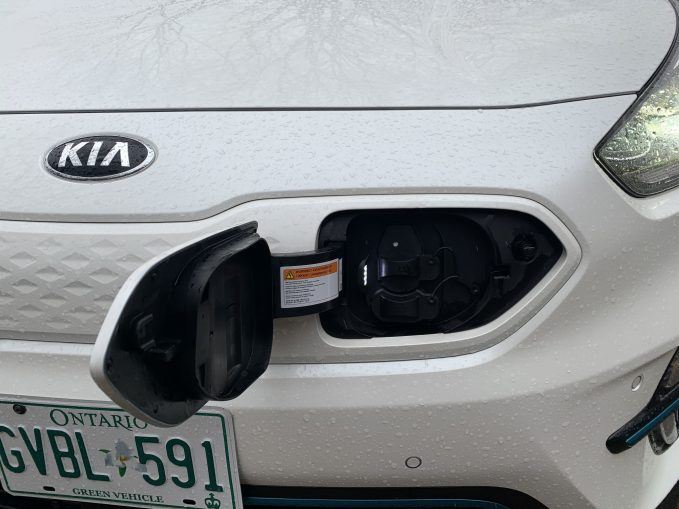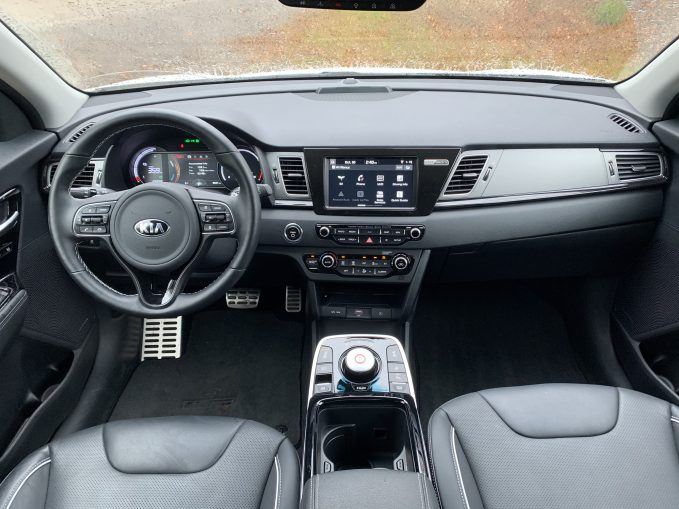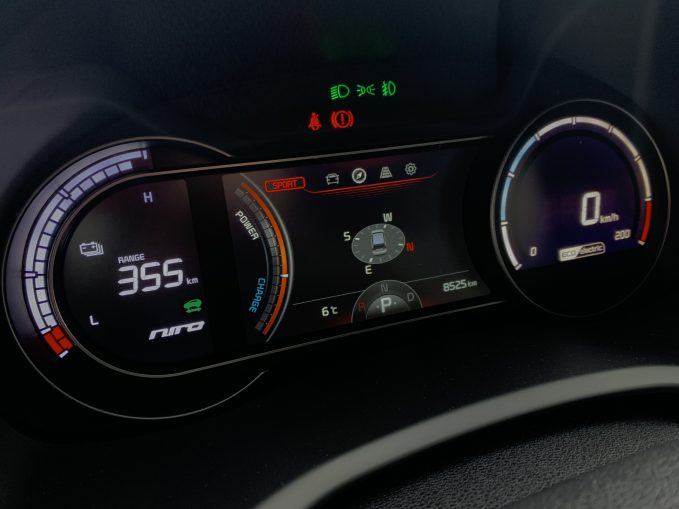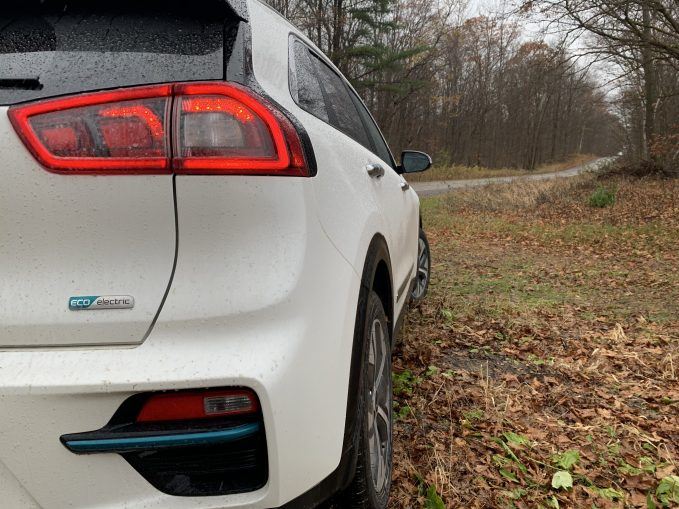Two segments growing faster than any other in today’s market are crossovers and EVs. The former has been growing like gangbusters for ages, with everyone from Aston Martin to Volkswagen busying themselves with stuffing their portfolios full of these high riding wagons. As for electric vehicles, manufacturers need to simultaneously appeal to shoppers while offering rigs with one eye on Johnny Polar Bear. Merging the two makes more than a lick of sense for the customer who makes treks to the hockey rink but brings burnt kale chips as a snack.
Kia is all-in with its crossover EV efforts, stocking its showroom with a brace of the things: the upcoming boxy Soul EV and the machine you see here, the Niro EV. Both offer similar appeal in terms of providing all-electric driving in a crossover-ized box but, thanks to vastly different styles, will likely appeal to very different customers.
Speaking of, all Niro EVs are equipped with a permanent magnet synchronous motor good for 201 horsepower and 291 lb-ft of torque. Thanks to the unique power generation properties of electric motors, very nearly all of that grunt is available right from rest, meaning the Niro EV accelerates very quickly when alighting from a stoplight. Unsurprisingly, your author prefers Sport mode, thanks to the immediacy of power delivery even at part throttle. Eco mode is fine for long hauls. Eco+, a mode which requires a long press of the drive mode button as if to say “are you sure you want this, Buster?” neuters the Niro EV in every driving dynamic except for full-throttle acceleration. It might consume the least amount of electrons but is certainly an exercise in frustration. Stick with Sport, please.
A host of driving modes are available to the driver, all of which fiddle with the Niro’s throttle response and affect the aggression level of regenerative braking which is designed to dump electrons back into the car’s battery under deceleration. Kia says the Niro EV is capable of traveling 239 miles on a single charge, meaning a 30 mile commute would require a twice-weekly top up at the pump plug.
Standard household outlets, the kind into which one plugs a tv or kettle, will fully juice the battery in an interminable 59 hours. More robust outlets, such as the one powering an electric clothes dryer, will turn the trick in about 9.5 hours. With such a plug installed in one’s garage or near one’s condo parking spot, full overnight charging is certainly within the realm of possibility. Level 3 DC fast chargers, of which there are plenty in urban areas, will get the deed done in about an hour.
Behind the wheel, your 6’6” author had no trouble finding plenty of headroom even with the presence of a sunroof, a notable observation in an EV, since under-the-floor batteries can raise the front row of seats and scupper the ability of a tall person to sit in any manner approved by the American Association of Chiropractors. Niro EV’s interior styling choices are quite like that of a standard Niro, which is to say logically laid out and, well, normal. Far too many manufacturers style the innards of their EVs like science projects, packed with neo-futuristic white plastic that would not look out of place in George Jetson’s home.
Not the Niro. Its sole nod to EV-ness is the hockey puck of a shifter, one which is flanked by buttons for seating temperature and various driving aids. Despite its newness, it has zero learning curve. Many OEMs are moving to by-wire shifters in a bid to save console space and, in the process, are reinventing the wheel in weird and complicated ways (*ahem* GM *ahem*). They could all take a lesson from Kia here, EV or not.
On the other hand, Kia could take a lesson from others—including its corporate cousin Hyundai—in how to style a digital dashboard. Niro EV’s cluster presents relevant and highly legible information but does so using numerals apparently ripped directly from a 1980s alarm clock. The rest of the center stack is pure Kia, from its ventilation controls to the infotainment screen. Save for the Westclox gauges, one might think they were in any other gasoline-powered Kia.
Rear seat accommodations are well packaged and more than adequate for the Family Unit, assuming they’re not a budding Steph Curry or Kawhi Leonard. Even if they are, board man will still get paid with the inclusion of heated rear seats and enough power outlets to keep everyone happy.
Features such as these help explain part, but not all, of the near-seven grand price disparity between this EX Premium and an entry-level EX. Other features on the top-rung trim are a phalanx of driving nannies such as lane-keeping, parking sensors at both ends, and blind-spot monitoring with alarms for rear-cross traffic.
The Verdict: Kia Niro EV Review
Can you live without those features? I sure can, especially for nearly $7,000. Given the knowledge that both trims of Niro EV provide the same all-electric driving experience in terms of power and range, the decision is clear. It is even more so when one considers the upcoming Soul EV, a vehicle right in Kia’s own wheelhouse, whose entry-level unit will be cheaper and offer 67 fewer horsepower and—more critically—less driving range.












